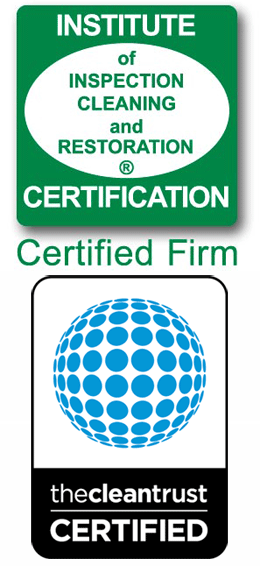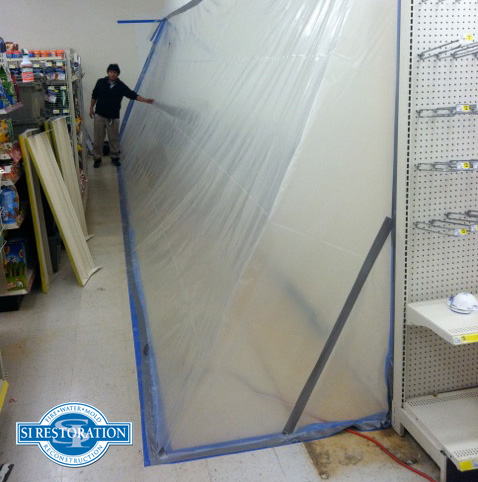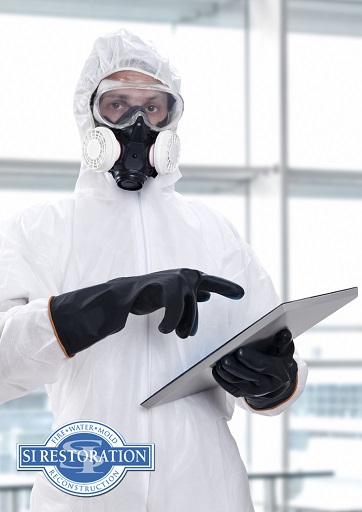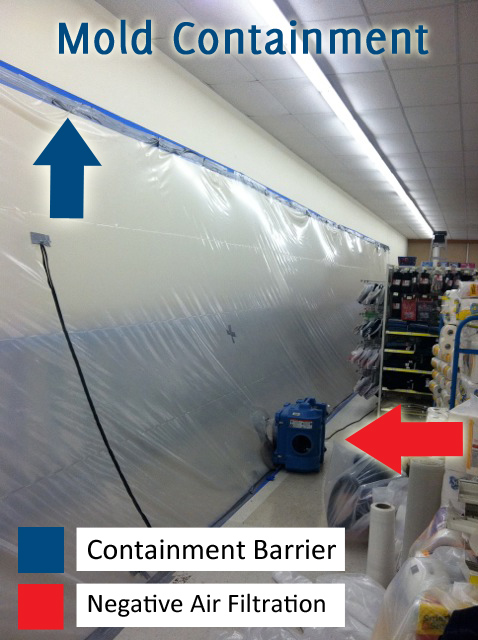Be Smart Ask For The Following When Searching For A Maryland Mold Removal Contractor
Maryland Mold Certifications IICRC
 Proper certification sets certified mold contractors apart from other mold removal contractors hired to handle mold remediation. The difference in using a certified mold removal contractor versus non certified mold remediation companies could result in a greater chance of serious health issues and even law suits from tenants. Since very few laws protect mold remediation specialists and the property owners they work for, the Institute of Inspection Cleaning and Restoration Certification (IICRC) was created to govern contractors and work practices in the restoration industry. As a non-profit, independent entity, the IICRC has designed guidelines for restoration work such as water damage, carpet cleaning, and mold removal.
Proper certification sets certified mold contractors apart from other mold removal contractors hired to handle mold remediation. The difference in using a certified mold removal contractor versus non certified mold remediation companies could result in a greater chance of serious health issues and even law suits from tenants. Since very few laws protect mold remediation specialists and the property owners they work for, the Institute of Inspection Cleaning and Restoration Certification (IICRC) was created to govern contractors and work practices in the restoration industry. As a non-profit, independent entity, the IICRC has designed guidelines for restoration work such as water damage, carpet cleaning, and mold removal.
The IICRC S520 Guidelines for Mold Remediation are the industry standard for safe and efficient mold mitigation. If a mold contractor is not adhering to these guidelines, many health and financial risks can endanger the project.
The IICRC also certifies individual technicians as well as entire contracting entities. These certifications are earned through vigorous testing and on-the-job training. Certification must be renewed periodically to ensure the accuracy of the mold remediation contractor.
Liability Insurance/Worker's Compensation Insurance
When hiring a certified mold contractor, their certification and expertise will not be worth anything if they are not insured to complete the project. Liability and worker's compensation insurance protects both the contractor and the property owner should something go wrong during that causes structural damage to the property or physical harm to a worker or property owner. While it is important for mold remediation contractors to possess liability and worker's compensation insurance policies, these policies will be null and void during a mold remediation project. If the contractor hired does not also possess a rider on their policy called Contractor's Pollution Liability Insurance, any work done during mold remediation will not be covered by liability or worker's compensation.
Contractor's Pollution Liability Insurance
 Contractor's Pollution Liability Insurance covers any work done with hazardous materials or substances like mold or asbestos. If the mold remediation company does not have a Contractor's Pollution Liability Insurance, any work done during mold remediation will not be covered by liability or worker's compensation.
Contractor's Pollution Liability Insurance covers any work done with hazardous materials or substances like mold or asbestos. If the mold remediation company does not have a Contractor's Pollution Liability Insurance, any work done during mold remediation will not be covered by liability or worker's compensation.
For instance, if a technician becomes injured during mold remediation and the contractor does not have Contractor's Pollution Liability Insurance, the property owner will be responsible for the technician's medical care. Not the contractor. Not the insurance company.
Bonded
Being bonded for mold remediation work is a bit different from typical contractor's insurance. Bonds are assigned to contractors to protect themselves and the property owner for specific jobs. If a project is bonded, property owners can make a reimbursement claim or for general compensation if a contractor abandons a project.
Bonds can also cover structural damages and theft. Bonds should be considered for larger jobs, especially in commercial mold remediation projects.
Personal Protective Equipment (PPE)
 Personal Protective Equipment (PPE) in necessary to prevent illness or injury during a mold remediation project. Though this added expense may seem unnecessary to a property owner, risking the health and safety of a technician could end up costing the property owner in the end.
Personal Protective Equipment (PPE) in necessary to prevent illness or injury during a mold remediation project. Though this added expense may seem unnecessary to a property owner, risking the health and safety of a technician could end up costing the property owner in the end.
Mold exposure can cause reactions and illness even in those who are not typically allergic to mold. Symptoms like skin irritation, eye irritation, chronic congestion, lung deficiencies, respiratory problems, and high fevers are all linked to toxic mold exposure.
To protect against these reactions and illnesses, the following PPE should be used at all times during mold remediation:
- N95(or better) Respirator Masks
- Goggles
- Gloves
- Boots or Boot Covers
- Body Coveralls
Use of Independent Industrial Hygienists or Home Inspectors
Some home or business owners may be tempted to cut costs by hiring the same mold remediation contractor to perform the work and the mold spore testing to ensure that the job has been done right.
Think on this, however. If the same company who does the work also provides the testing materials and the results, who is to say that these test results won't benefit the contractor and not the property owner? For instance, if a property owner believes they may have mold and hires a contractor to test, results could show a significant scope of work that needs to be done in order to remove the toxic fungus. However, who is to say that these results were not fabricated just to cost the property owner extra money?
To protect against misdiagnosed mold exposure, or against false readings after a project has been complete, a third-party, independent industrial hygienist or home inspector should be used to complete pre and post-testing.
Reputable certified mold remediation contractors will only complete a project that requires testing if an independent party is involved. This eliminates the possibility of conflict of interest and manipulated test results.
Mold Containment
 A make-or-break factor when hiring a certified mold remediation contractor is the employment of a containment barrier around the affected area. Mold spores can cross-contaminate other areas of the property whether they are dead or alive. Spores, or seeds, are sent into the air after the mold colony has been "attacked". Simply touching a mold colony will cause spores to find a safer area to grow. Certified mold contractors must set up a containment barrier during every project. This will ensure that spores that are discharged during mold mitigation will be sealed in that area. A negative air filtration unity will catch spores that are discharged and process them through a commercial-grade HEPA filter. Once the biowash and sanitization process has been completed, HEPA Filter Vacuums will then be used to ensure every spore has been removed and eradicated from the affected area.
A make-or-break factor when hiring a certified mold remediation contractor is the employment of a containment barrier around the affected area. Mold spores can cross-contaminate other areas of the property whether they are dead or alive. Spores, or seeds, are sent into the air after the mold colony has been "attacked". Simply touching a mold colony will cause spores to find a safer area to grow. Certified mold contractors must set up a containment barrier during every project. This will ensure that spores that are discharged during mold mitigation will be sealed in that area. A negative air filtration unity will catch spores that are discharged and process them through a commercial-grade HEPA filter. Once the biowash and sanitization process has been completed, HEPA Filter Vacuums will then be used to ensure every spore has been removed and eradicated from the affected area.
Without containment, property owners run the risk of other areas of the home or business becoming contaminated with aggressive mold growth.
EPA Mold Removal and Disposal Practices
What happens to debris exposed to mold after it has been removed? Where is it disposed? How is mold cleaned an eradicated? These frequently asked mold questions can be answered by the Environmental Protection Agency (EPA). Like the IICRC, the EPA has created a unique set of guidelines designed to protect those who are exposed to mold. Certified mold remediation contractors should adhere to these EPA Mold guidelines to ensure the safety and health of their technicians and their clients.
Mold Remediation Customer Testimonials
There may be no better reason to hire a certified mold remediation contractor than witnessing the satisfaction and joy of other property owners who have used their service in the past. Testimonials are a great way to measure the efficiency of a mold remediation contractor. Whether expressed through writing, through voice, or visually, testimonials provide unbiased opinions on work that will effect members of your family or business.
SI Restoration mold remediation cleanup services are available in the following Maryland areas :
Towson
Pikesville
Catonsville
Bel Air
Baltimore City
Baltimore County
Dundalk
Essex
Laurel
Parkton
Westminster
Aberdeen
Hyattsville
Burtonsville
Bowie
Chevy Chase
Elkton
Gaithersburg
Rockville
Germantown
Hampstead
Manchester
Mount Airy
Sykesville
Takoma Park
Upper Marlboro